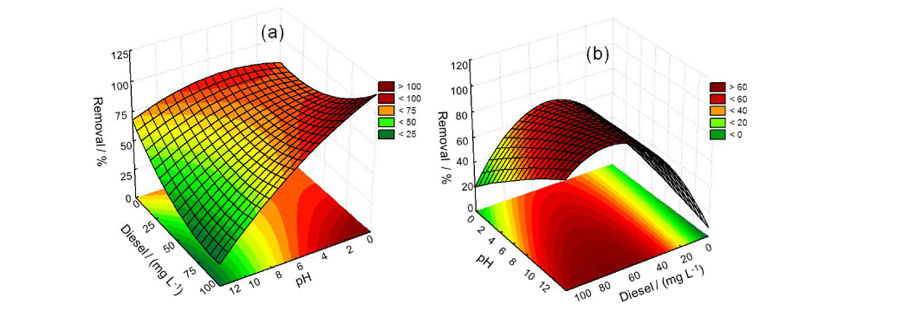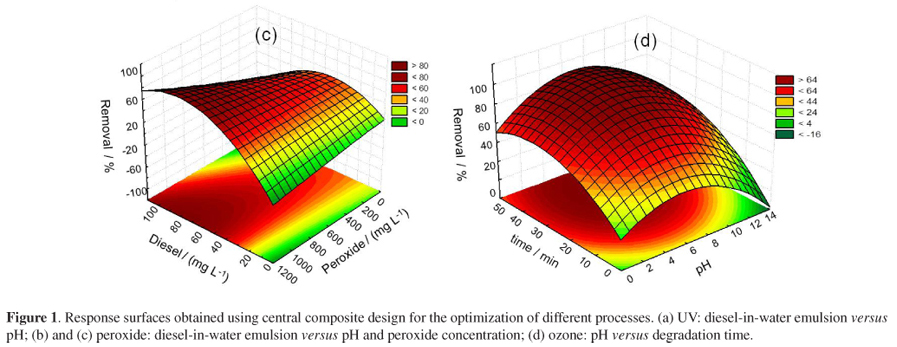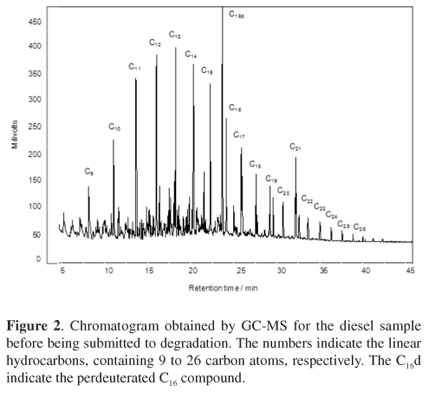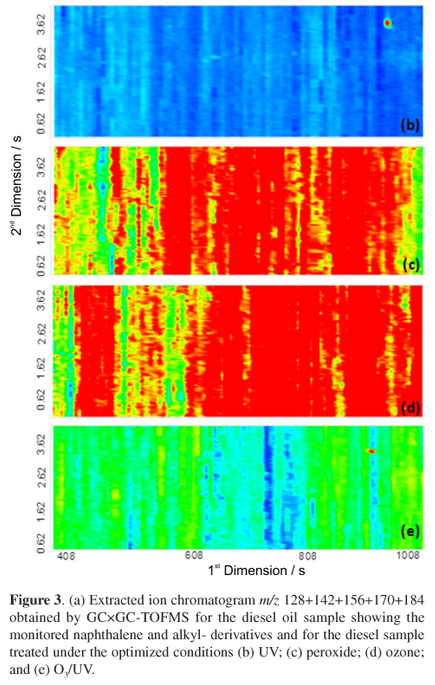This paper provides a comparative study of different photochemical oxidation processes and a detailed characterization of the by-products of diesel oil degradation performed using comprehensive two-dimensional gas chromatography coupled to time-of-flight mass spectrometry (GC×GC-TOFMS). Diesel degradation was conducted in a photolytic reactor using UV, H2O2, UV/H2O2, O3 or O3/UV. The best conditions for each process were obtained applying multivariate analysis and the experimental results indicated that the O3/UV process was the most feasible for the treatment of wastewater containing diesel fuel, with a degradation percentage of > 90%. Almost complete degradation of the aromatics was achieved. Phenolic compounds were identified as by-products of the diesel samples treated with the UV, H2O2, O3 and O3/UV processes. Besides the phenolic compounds, other by-products identified included carboxylic acids and ethers in the UV/peroxide treatment, ethers in the UV irradiation treatment and ketones in the ozone treatment.
GC×GC; diesel oil; degradation; by-products; comprehensive two-dimensional gas chromatography











